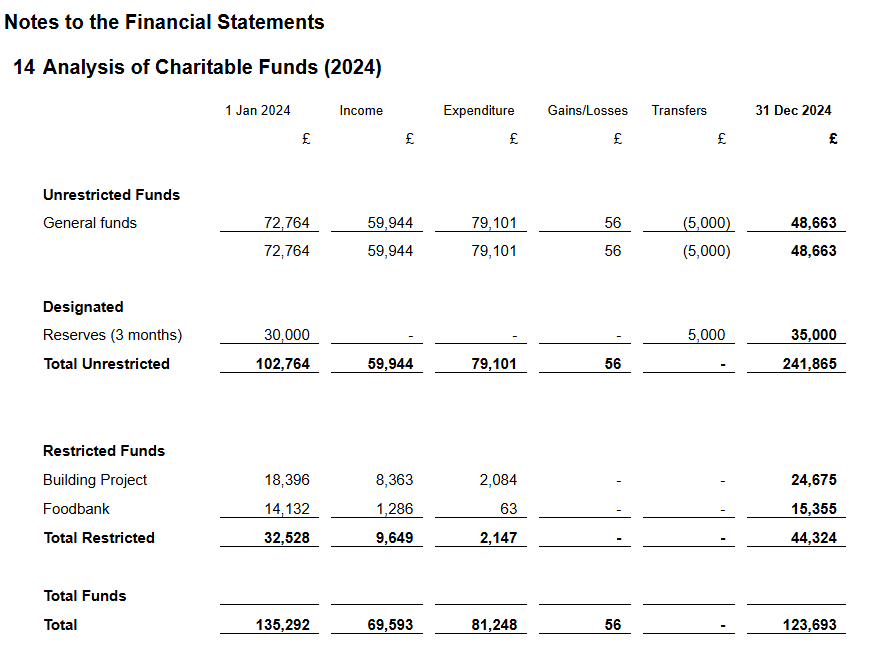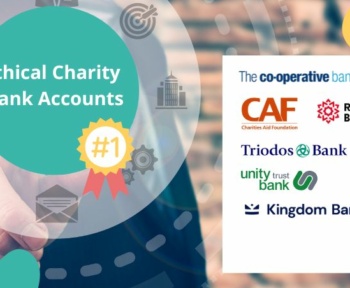The Fund Movement Summary report is a great one-stop-shop to see your fund balances at the start and end of a reporting period.
It also shows you all income, expenditure, fund transfers, investment gains/losses, and revaluation of assets during that period.
In this blog, we explain its purpose and give some examples of how you might want to use it.
To learn more about different financial reports and how to check and review them, see this blog on Understanding Key Charity Financial Reports.
This blog article is relevant to all organisations no matter what your accounting basis is. However, references to investment gains/losses and asset revaluation will only be relevant to organisations that prepare accounts on an accruals basis. Not sure about the difference between accruals and receipts & payments accounting? Check out our blog for further guidance!
What does the Fund Movement Summary report show?
The Fund Movement Summary report, or Movement of Funds note in statutory (year-end) accounts, shows financial activity across a period of time.
It is similar to the Statement of Financial Activities (SOFA report). But is a summary and so, contains less detail, making it an ideal management report for your finance team.
It usually has 7 columns (as well as the fund name):
- Opening balance (the balance of each fund at the start of the reporting period)
- Income (any income coded to this fund during the reporting period)
- Expenditure (any expenditure coded to this fund during the reporting period)
- Fund transfers (a positive number indicating funds transferred into the fund, and a negative number showing funds transferred out of the fund)
- Accruals accounts only: Investment gains or losses (these aren’t classed as income/expenditure but affect fund balances)
- Accruals accounts only: Asset revaluation (these aren’t classed as income/expenditure but affect fund balances)
Here is an example report from ExpensePlus. This demonstration organisation prepares accounts on an accruals basis.
In the Fund Type view of this report, there are subtotals of unrestricted, designated, restricted, and endowment funds. This example organisation does not have any endowment funds.
The black totals show all unrestricted (including designated) and all restricted (including endowment) funds.

Here is the equivalent report in a format you might recognise from a set of statutory (year-end) accounts. Similarly, there are subtotals for all unrestricted (including designated) and all restricted funds.

What does the report not show?
Like the SOFA report, the Fund Movement Summary report doesn’t show balance sheet movements.
For example, the purchasing of a fixed asset is not classified as expenditure. It simply reduces the cash assets that a fund has and increases the fixed asset balance by the same amount. Therefore, it doesn’t alter the overall fund balance, so it doesn’t appear on the Fund Movement Summary report.
Similarly, if you pay off a loan, this balance sheet movement doesn’t affect the fund balance. So, this won’t show up on the Fund Movement Summary report. It is simply a movement from a cash balance to a creditor balance, inside the same fund.
Whilst the Fund Movement Summary report represents all income and expenditure, there is no detail since it is a summary report. In your statutory (year-end) accounts, there will be other notes which give a breakdown of your income and expenditure. If you’re using ExpensePlus, with the correct user permissions, you can drill into the figures on the Fund Movement Summary report to get the breakdown you need.
For organisations preparing accounts on a receipts and payments basis, the fund balances will be cash balances. Cash balances in a fund are not the same as bank balances. This is true even if you operate different bank accounts for different funds (which is not typically necessary).
However, for organisations preparing accounts on an accruals basis, the Fund Movement Summary report doesn’t show what makes up the fund balances. This requires caution and consultation of the balance sheet as a healthy fund balance doesn’t necessarily mean lots of available cash!
How is the Fund Movement Summary report different from the SOFA report?
There are many similarities between the SOFA report and Fund Movement Summary report.
Both show the movement in funds (including income and expenditure) across your whole organisation’s finances.
Whilst you will include a note in your year-end accounts regarding the movement in funds, the Fund Movement Summary is more of a management report. It gives details about the funds in which income and expenditure took place. This is useful for finance teams and trustees to have an overview of their organisation’s finances all on one screen.
Why is the Fund Movement Summary report useful and important?
The Fund Movement Summary is a very useful summary report as it displays the income and expenditure (as well as other movements in fund balances) per fund, and gives closing fund balances.
It’s therefore useful to trustees or management teams to see a headline picture of their organisation’s finances across various funds. Meanwhile, other income and expenditure reports (including the SOFA report) would not show this data split by fund.
We often hear that users responsible for presenting financial information to trustees or leadership teams distribute the Fund Movement Summary report as a clear way to show movements in the organisations finances at monthly or quarterly meetings.
Further Resources
If you want to find out more about Fund Accounting, check out our other fund accounting blogs, or visit the Stewardship Resources Hub, which has lots of helpful information and resources.
ExpensePlus is a cloud-based fund accounting software package designed for churches and charities. ExpensePlus makes managing fund accounts simple and straightforward. It’s used by hundreds of charities and churches across the UK and is rated 4.8 stars (out of 5) on Google with over 900 user reviews.







